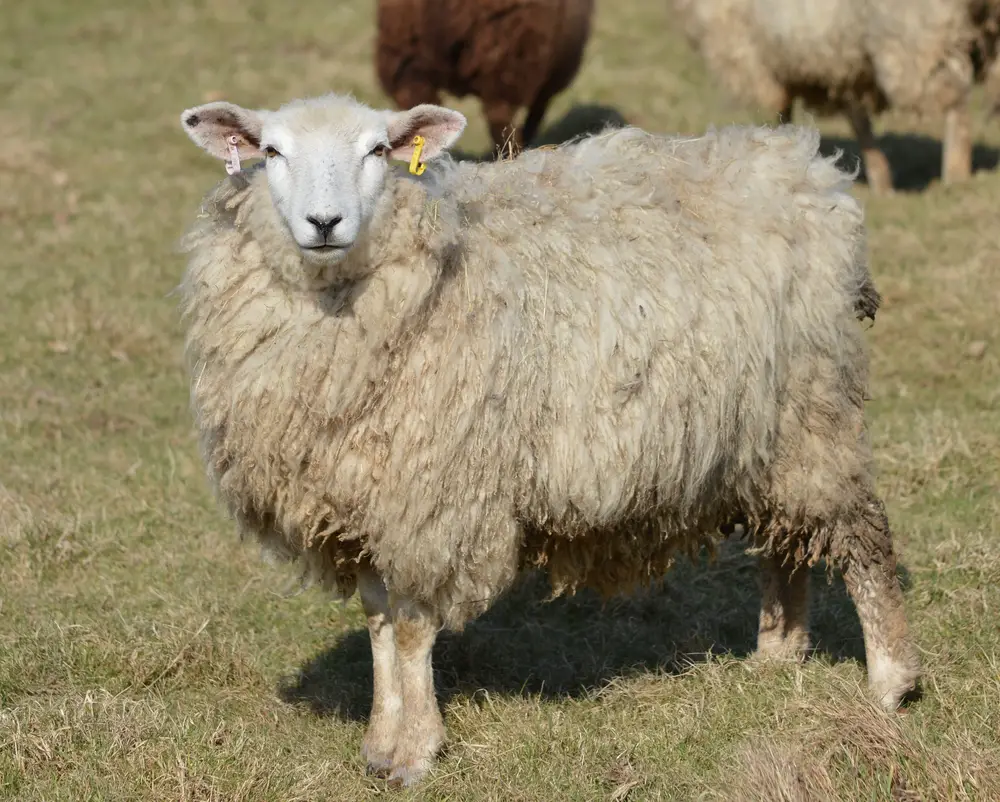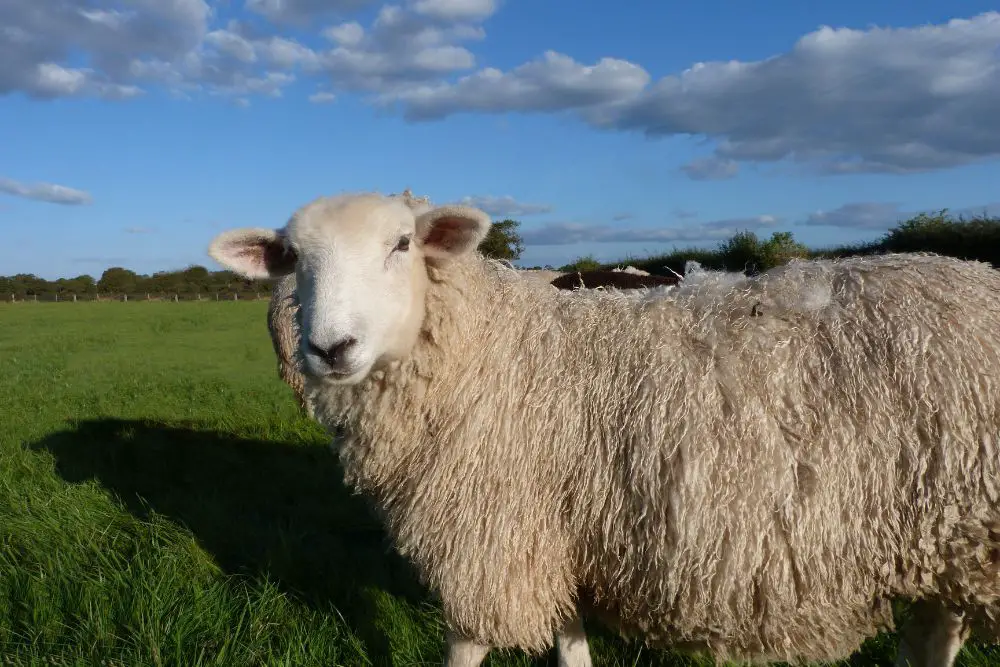Romney Sheep are a sheep native to Romney Marsh in England, and are also known as Romney Marsh Sheep. As long wool domestic sheep, they are versatile and are known for having a lovely, full-body fleece that is resistant to rain but also produces great-tasting meat.
This article will cover the history of the Romney sheep, their breed attributes, and examine the characteristics of their wool in detail. You’ll also discover the positive attributes and benefits of owning Romney sheep, and discover if this breed will make a great fit for your farm.
Table of Contents
Where do Romney Sheep Come From?
Romney Marsh Sheep were originally raised near the English Channel, between Sussex and Kent, however, many modern sheep breeds can trace their roots to the Romney sheep, including famous modern breeds of sheep in New Zealand, South America, Canada, the United States, and the Falkland islands.
As one of the oldest sheep breeds in the world, the first Romneys have contributed to world trade dating back to the Romans and possibly earlier.
Wool was England’s most important export from the 14th to the 16th century. Yet, it wasn’t until 1896 that the Romney breed was recognized as a pedigree by England.
In the 19th century, Leicester blood was introduced to the Romney flock in an attempt to increase the size of the sheep and improve the fleece.
In the 20th century, Romney’s fell out of favor, but their popularity surged in the 21st century as farmers began looking for naturally healthy breeds that were dual-purpose and could adapt to different environments.
Romney sheep were first imported to the United States in 1904 and the flock was brought to Oregon, where they thrived. In 1912, the American Romney Breeders Association was founded and the American Romney first got its breed standard.
Their popularity continued to grow until this breed was well-known nationwide and the gene pool was diversified with Romneys from England and New Zealand, to strengthen the desirable traits of the breed.
The Romney sheep is today one of the most recognized breeds worldwide.
What are the Characteristics of the Romney Sheep?
| Characteristics | Description |
| Origin | English Channel (between Sussex and Kent) |
| Appearance | The Romney sheep has a medium to large sized body and a wide head. They can come in a natural brown color, or be white. They have a straight back and deep loin with a wide rump. Their bodies should be muscular, with a dense bone-structure. Both rams and ewes must have good conformation, a clean face, and long, wool-covered legs with black hooves. |
| Wool | Micron range from 32 to 39 Wool grade is between 36’s to 48’s Staple length between 5 and 8 inches Grease fleece weight of 10 to 18 pounds (remarkably high!) Yield between 55 to 70 percent |
| Weight | Rams weigh between 200 and 275 pounds Ewes weigh between 200 and 275 pounds |
| Fertility | Naturally fertile and easy lambing |
| Meat | Flavorsome and distinctive |
| Environment | Highly resilient to cold. Does best in wet and marshy climates. |
| Common Uses | Dual-purpose – meat and wool production |

What Kind of Fleece Does the Romney Produce?
Romney sheep offer a quality fleece that is heavy, lustrous, and hangs in separate locks.
Purebred Romneys have a wool clip that has many commercial uses and is highly sought after for its creamy color, while also being known for high lanolin content.
Why Should You Raise Romney Sheep?
There are many reasons why you should consider raising Romney Sheep on your sheep farm:
- Hand spinners love their wool and hand-spinning is easily done due to staple length
- Romneys are naturally resistant to foot rot and internal parasites
- Natural colored Romneys and white Romneys exist – offering a choice in the color of wool you wish to have
- Romney’s are a dual-purpose breed that offers delicious meat as well as wool
- Romney ewes are naturally fertile and have easy lambing (175% on average)
- Romney sheep quickly convert feed
- They are resistant to rain and do well in wet, marshy environments

